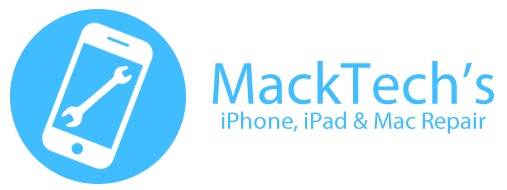Our customer discovered our services through a Google search, seeking help for their 15″ MacBook Pro 2019 (A1990) which had a trackpad that wasn’t clicking properly. The problem was particularly noticeable when pressing on the bottom left of the trackpad, where it felt muted and lacked the usual haptic feedback.
Initial Inspection and Diagnosis
Upon receiving the device, we began with an initial inspection. The customer’s description of the issue indicated a potential problem with the trackpad’s physical mechanism or an internal component malfunction. However, without visible damage, the exact cause remained uncertain. To diagnose the problem accurately, we decided to disassemble the trackpad assembly for a closer look.
Discovering Liquid Damage
Upon disassembly, we discovered the root cause: liquid damage. Dried liquid residue was present under the trackpad and within its layers. This residue caused the trackpad to malfunction, specifically affecting the bottom left corner’s responsiveness. Interestingly, the trackpad showed no visible signs of damage from the exterior. Despite three-quarters of the trackpad working fine, the bottom left section was unresponsive.
Detailed Repair Process
Step 1: Disassembly
The repair process began by removing the MacBook’s bottom cover and disconnecting the battery to ensure safety. This initial step is crucial to prevent any accidental electrical discharge or further damage during the repair.
Step 2: Trackpad Removal
We carefully removed the trackpad flex cable and the trackpad itself. Handling these components requires precision to avoid damaging other parts of the MacBook.
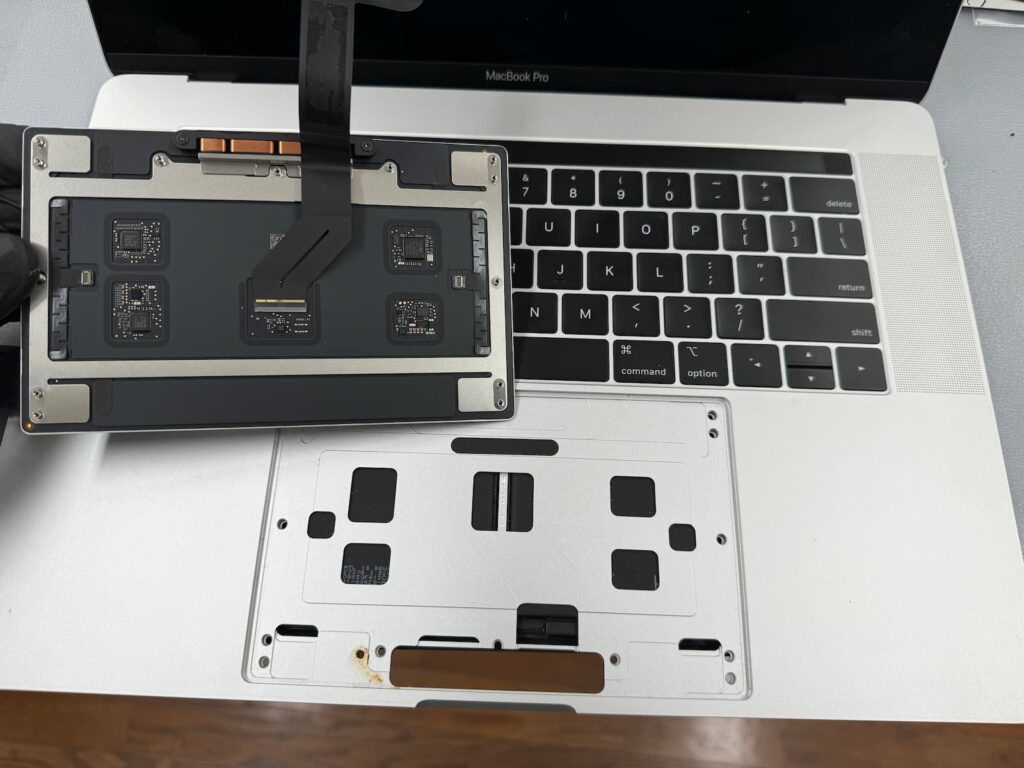
Step 3: Cleaning
Cleaning the aluminum area beneath the trackpad was crucial to remove any remnants of the liquid residue. We used isopropyl alcohol to ensure that all traces of the liquid damage were eradicated. This step is vital as even small amounts of residue can cause future issues.
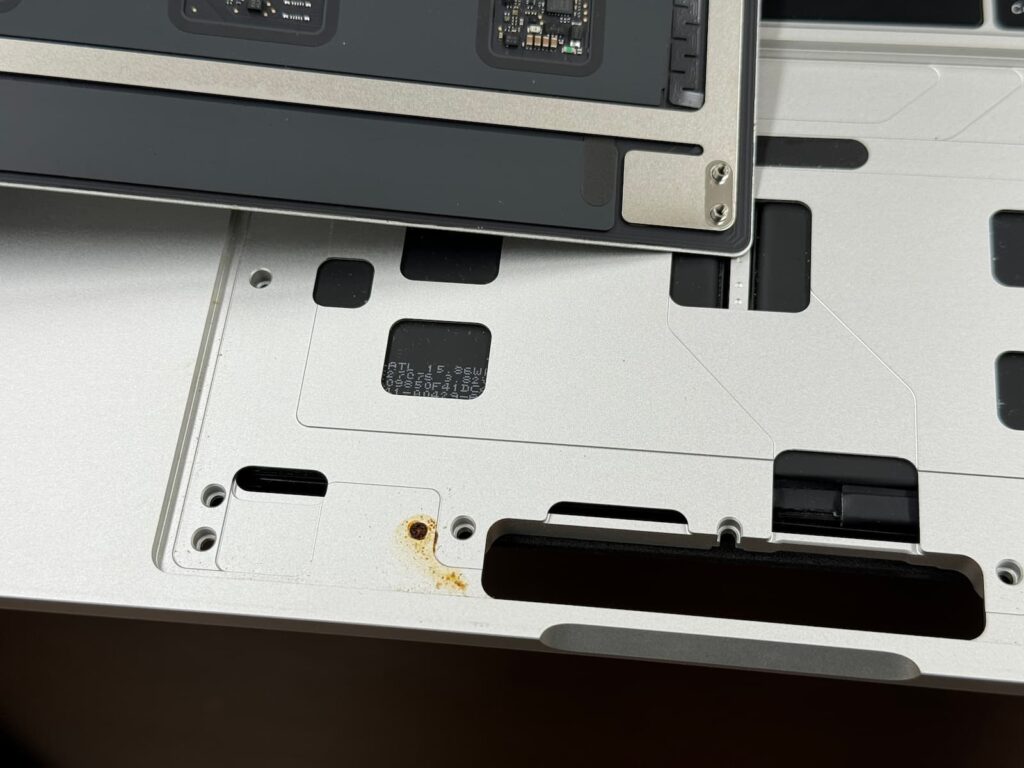
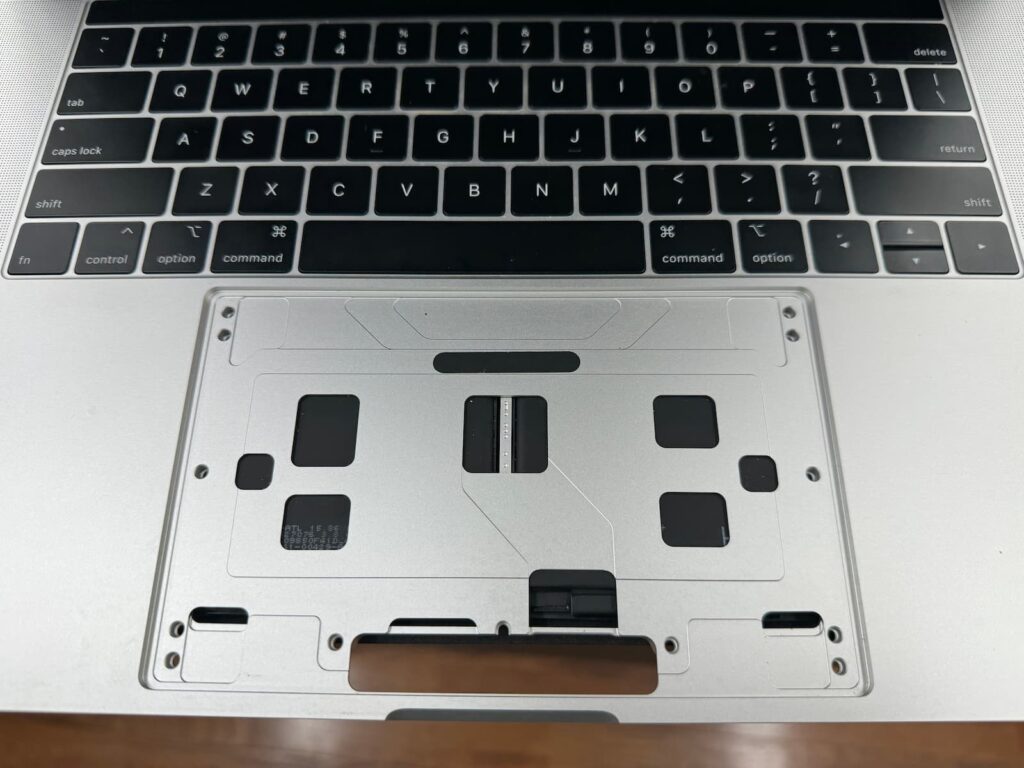
Step 4: Installation of New Trackpad
We installed a new trackpad, ensuring it was free of any liquid damage. Aligning the trackpad correctly and securing it in place is essential for its proper functionality.
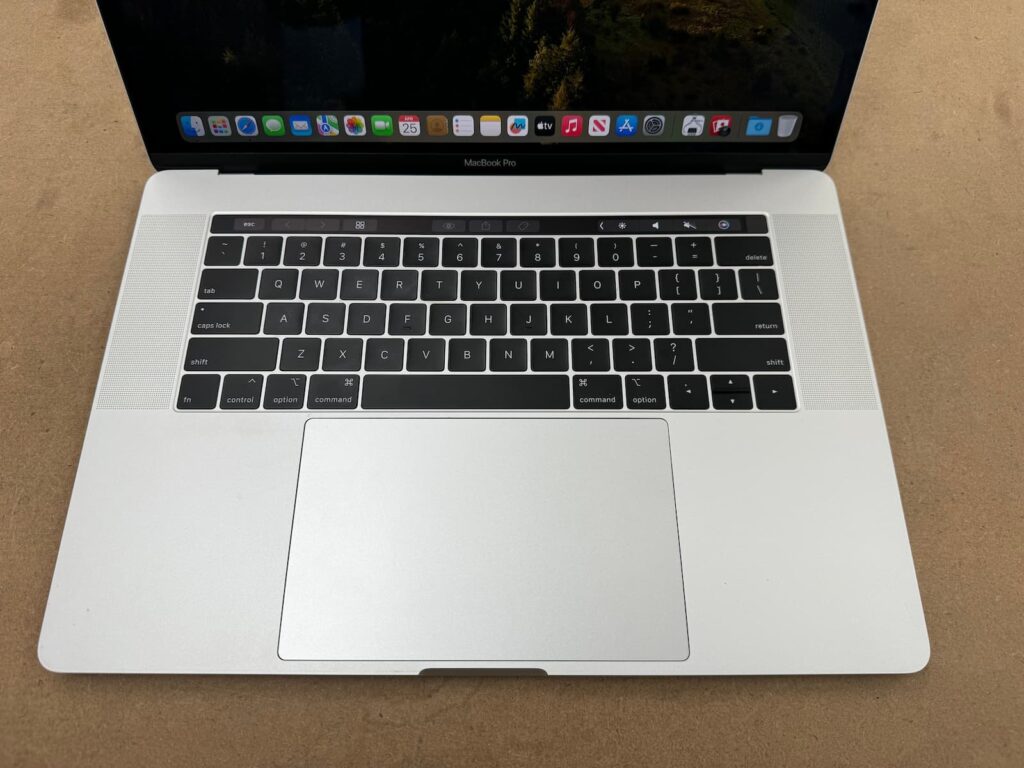
Step 5: Reassembly
After installing the new trackpad, we reassembled the MacBook by reconnecting the trackpad flex cable, securing the battery, and replacing the bottom cover.
Post-Repair Testing
Once the MacBook was reassembled, we conducted a series of tests to ensure the new trackpad was functioning correctly. This included testing the haptic feedback and click response across the entire trackpad surface, with particular attention to the previously affected bottom left corner. The tests confirmed that the trackpad was fully operational, providing the correct “click feel” and haptic feedback throughout.
Challenges and Observations
It’s uncommon for trackpads to exhibit intermittent issues—typically, they are either fully functional or completely faulty. This repair underscored the importance of a thorough and detailed diagnosis, especially for issues not immediately visible.
Conclusion and Recommendations
Our same day/next day turnaround time ensured the customer received their MacBook Pro back promptly, fully functional and with a trackpad that clicked perfectly once again. This case serves as a reminder of the complexities that can arise with liquid damage and the importance of expert repair services.
Preventive Measures:
We advised the customer on preventive measures to avoid similar issues in the future, emphasizing the importance of keeping liquids away from their MacBook and regularly checking for any signs of spills or damage.
Customer Satisfaction:
The customer was pleased with the quick turnaround and the thoroughness of the repair, appreciating the detailed diagnosis and effective solution provided.
This repair story highlights the importance of professional repair services for complex issues like liquid damage, ensuring that even hidden problems are accurately diagnosed and effectively resolved. If you need help with your Mac, we offer drop-off as well as mail-in services.
